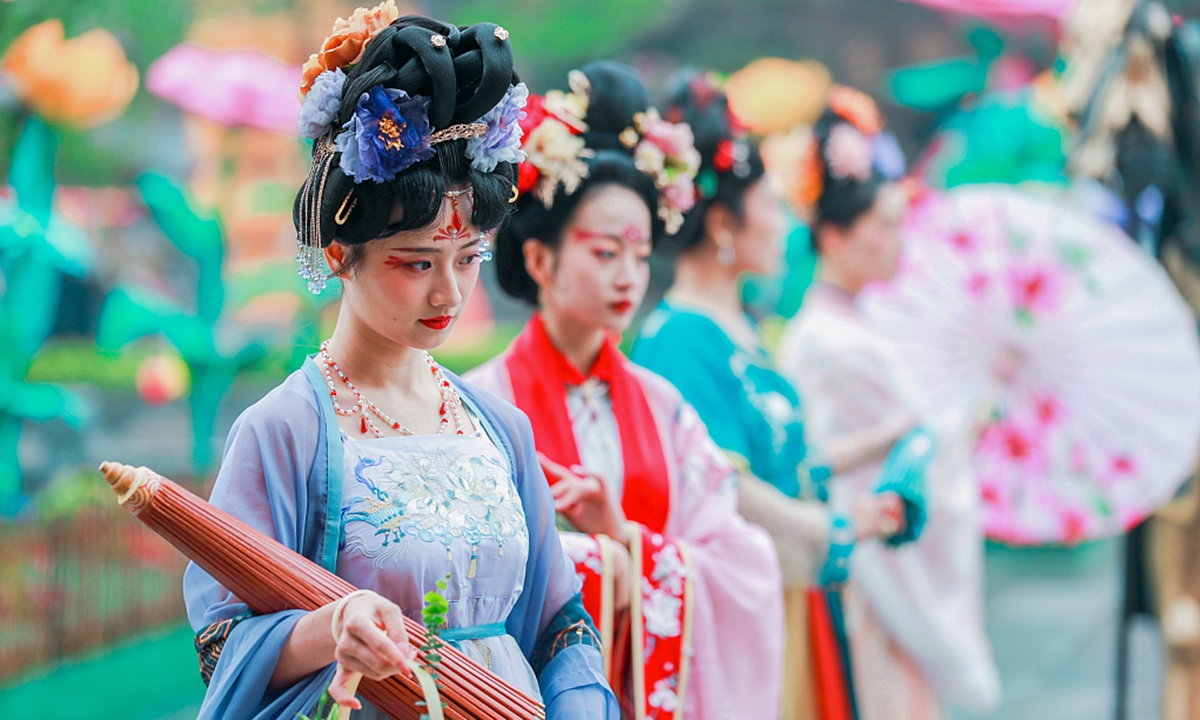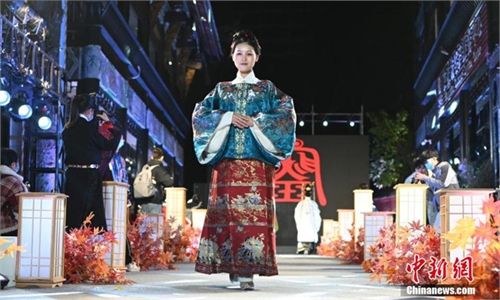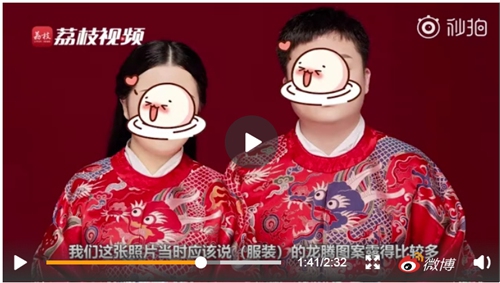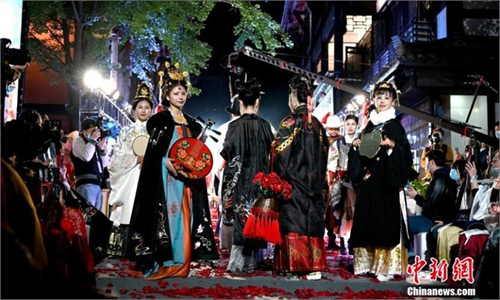ARTS / DANCE
China's 'three trap' fashion subculture inspiring young creatives as market continues to grow

Photo: VCG
China's sankeng, or "three traps," is a sub-culture fashion slang for three types of garments: Hanfu, the traditional clothing worn by China's Han ethnic group; Lolita costumes and JK uniforms - the preppy uniforms worn by Japanese female high school students. Described as "traps" due to their addictive nature, these types of clothing are growing increasingly popular among young Chinese who want to show off distinctive self-images. Sankeng has not only become a hot topic on the internet, it has also become a booming market. According to forecasts from iiMedia Research, Hanfu sales are expected to reach 10 billion yuan ($1.5 billion) in 2021.
"I started my collection of Hanfu in 2010, but, I would only dare to wear it on very particular occasions because people would think me weird. Now things have changed, so I wear it everywhere I want, and have been picking up clients who also like tailored clothing," Xuanxue, a maker and a fan of Hanfu, told the Global Times, outlining people's growing acceptance of the traditional clothing as everyday wear.
Young people like Xuanxue have become "pushers" popularizing this new clothing culture not only in everyday life, but also on the internet. Among the "three traps," Hanfu has the biggest fan base on the internet in China, including forums, social groups and websites on hot social media platforms such as Sina Weibo and Douban.
"Hanfu is more than just "clothing," it is a valuable cultural item that helps people network. We have over 4.50 million users by now," an insider in the Hanfu clothing industry who works with a major Hanfu information- sharing platform told the Global Times on Thursday.
Some Hanfu fans on social media noted that they were more willing to wear Hanfu than the traditional Korean Hanbok, which seems to have lost some popularity in the Chinese market after an online cultural debate broke out a few months ago concerning the garment's origins.
Fans of the other two "traps," Lolita costumes and JK uniforms, consider themselves even more niche than Hanfu lovers because the two outfits are often seen as sexually suggestive - which an association fans refute - and linked to the growing controversy that they portray women as dolls.
"Unlike the cultural sophistication that people associate with Hanfu, whenever I talk to strangers about my 'hobby uniform,' they give me a look that says "oh, you must be doing some kinky role play.' Then if I explain to them that it is supposed to look like a high school girl's uniform, that makes things even worse, as it does sound like role play… But we just like the bookish preppy look sported by Japanese anime characters," Xiaoyu, a 23-year-old JK uniform fan, explained to the Global Times on Thursday.
"Some people hate us, I guess because they think we are trying too hard to be cute, like a doll. But the essence of the style is to make yourself a doll as much as you can. I've read hate comments on my blog that says my Lolita servant character promotes the 'objectification of women,' but the doll isn't an object to us…" Yuseuo, a Lolita culture blogger, told the Global Times on Thursday.
Despite these struggles, fans of the sankeng sub-culture will continue to embrace their hobby as a way to show their "true selves" and, quoting Yuseuo, the "worth of being young."
With more and more people taking an interest in the sankeng trend, the cultural phenomena has also been promoting the development of the fashion industry, leading the makers of the traditional Chinese clothing to incorporate more up-to-date and wearable styles in their designs to attract more consumers.
"We have launched a techno collection, which adds some digitally printed universe patterns to our Hanfu clothing,"
Manufactures are also feeding the market. For instance, in Shandong Province, there are more than 2,000 sellers in the Hanfu industry chain, and according to a January report from iiMedia Research, it is predicted that there will be 6.89 million Hanfu enthusiasts in China in 2021.



